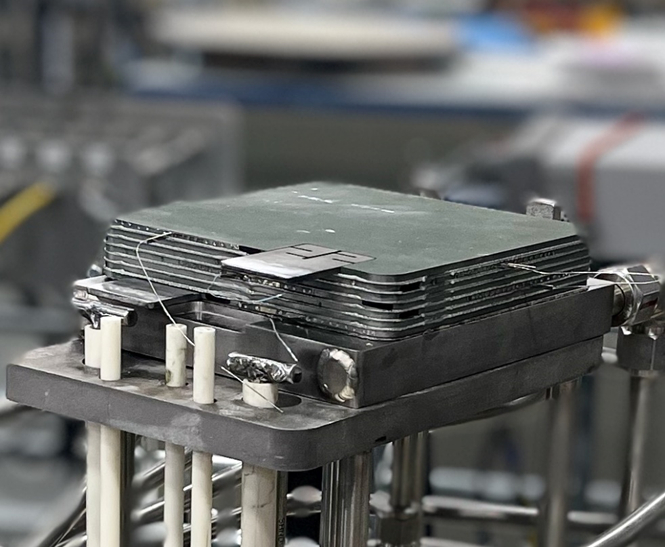Technology developed by OxEon Energy with support from NETL is building upon earlier extraplanetary success to create a stable, robust and low-cost system capable of producing hydrogen at high pressures — an important step toward the commercialization of clean energy devices, a Tuesday press release detailed.
“OxEon designed, built, and delivered an electrolysis stack to NASA’s Mars 2020 Perseverance Rover mission,” said NETL’s Drew O’Connell, project manager, in the release. “The stack met all requirements of the mission and NASA declared the unit to be at a technology readiness level, or TRL, of nine, the first ever solid oxide stack to reach that TRL. That technology formed the basis for this project with NETL.”
In the NETL collaboration, OxEon set out to operate a solid oxide electrolysis cell (SOEC), that produces hydrogen at elevated pressure of 2 to 3 bar. SOECs work similarly to solid oxide fuel cells (SOFC) but in reverse, producing hydrogen by splitting it from water using an electric current.
This project was also designed to address common challenges faced by the SOEC industry by implementing process and cell component modifications to demonstrate improved cell performance and stability, oxidation recovery of the fuel electrode, performance stability through thermal cycles, and evaluation of the effect of contaminants, the release said.
This demonstration involved testing a stack for 1,800 hours while cycling between SOEC and SOFC modes of operation. The degradation rate was 0.6% per 1,000 hours in SOEC mode and 0.3% per 1,000 hours in SOFC mode.
“Degradation is a serious concern in SOEC development,” O’Connell said. “The improved performance and stability shown in this test is an example of what will be required to meet the U.S. Department of Energy cost and performance targets, including achieving 40,000 operational hours. Also, these stepwise improvements to baseline performance demonstrate a pathway to low-cost hydrogen production.”
The project team also tested the SOEC electrode at Pacific Northwest National Laboratory by exposing it to steam overnight to fully oxidize the nickel component. The team was then able to completely restore cell performance simply by applying voltage without providing external hydrogen gas, demonstrating oxidization recovery.
“It’s crucial to keep the nickel in the hydrogen electrode in a metallic state, so showing that it recovers after oxidation by self-generated hydrogen was an important achievement,” O’Connell said. “Prior to this advancement, an interruption or upset in the conditions to the recycle loop could cause permanent, irreparable oxidation of the fuel electrode.”
The final milestone achieved by the team involved eliminating the strontium-containing layer in the SOEC stack while retaining the same initial electrode performance. Testing over multiple days also showed less degradation than cells containing strontium.
“Strontium precipitation, migration and reaction with other cell components are known degradation mechanisms for SOFC/SOEC operation,” O’Connell said. “So being able to eliminate this without affecting performance is an important advancement.”
Furthermore, an SOEC stack tested at OxEon combined the improved fuel electrode and strontium-free layer on the oxygen electrode. The stack demonstrated complete recovery of performance after oxidation of the nickel-based fuel electrode without requiring the presence of hydrogen in the steam inlet. After five oxidation recovery cycles, the stack was deep-thermal cycled five times from the operating temperature to room temperature. The stack showed no loss in performance after each thermal cycle and retained low degradation characteristics.
NETL is a U.S. Department of Energy national laboratory that drives innovation and delivers technological solutions for an environmentally sustainable and prosperous energy future. By using its world-class talent and research facilities, NETL is ensuring affordable, abundant, and reliable energy that drives a robust economy and national security, while developing technologies to manage carbon across the full life cycle, enabling environmental sustainability for all Americans.




